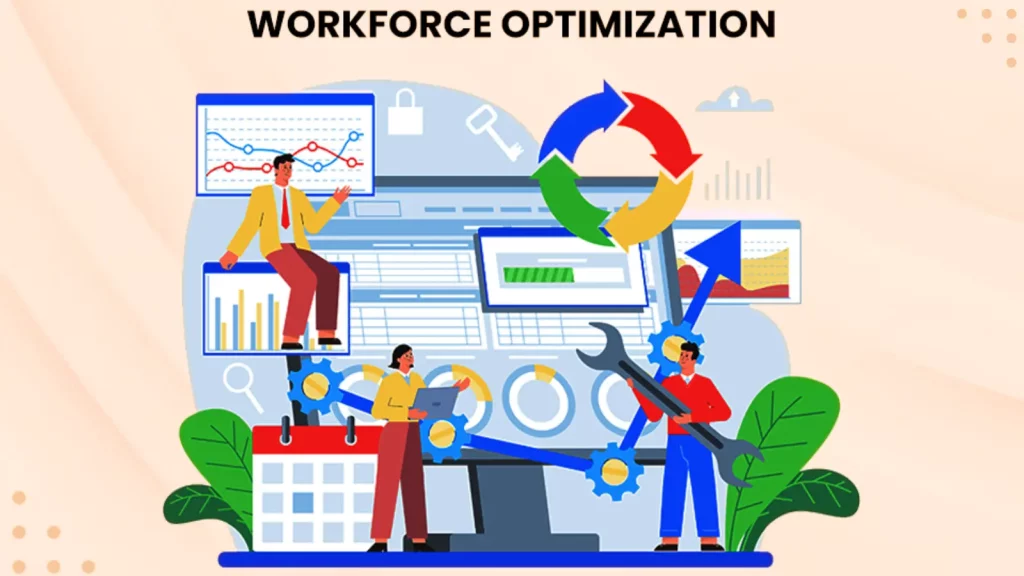Workforce Optimization: Reducing Costs, Boosting Productivity
Workforce Optimization: Reducing Costs, Boosting Productivity
Blog Article
Workforce Optimization for Remote Teams: Best Practices
In today's fast-paced organization atmosphere, companies are constantly seeking approaches to improve productivity while lowering working costs. workforce optimization has emerged as an ideal approach to achieve these goals. By leveraging sophisticated tools, information analytics, and staff engagement methods, businesses can streamline operations, increase performance, and foster a far more encouraged workforce. This blog post can discover various techniques for workforce optimization , providing realistic ideas and cases for organization leaders seeking to boost production and reduce costs.
Understanding Workforce Optimization
Workforce optimization requires a thorough way of managing and increasing staff efficiency, production, and satisfaction. It combines engineering, data analysis, and individual source administration to align workforce actions with organizational goals. By optimizing the workforce, companies can ensure that the right persons are in the right tasks, performing the best jobs at the proper time.

Leveraging Technology for Better Management
Technology plays an essential position in workforce optimization. Sophisticated pc software alternatives can help managers check worker performance, track progress, and recognize areas for improvement. As an example, workforce management programs can automate scheduling, lower administrative burdens, and ensure that staffing levels meet demand. Also, performance management resources can provide real-time feedback to employees, supporting them stay on course and enhance their output.
Knowledge Analytics and Decision Making
Knowledge analytics is a powerful tool for workforce optimization. By analyzing data on worker efficiency, attendance, and productivity, organizations may gain important insights in to workforce trends and patterns. These records can be utilized to make knowledgeable choices about staffing, education, and resource allocation. For instance, information analysis may show top productivity hours, enabling managers to schedule adjustments appropriately and increase efficiency.
Increasing Staff Engagement
Worker involvement is a important part of workforce optimization. Engaged workers are more effective, inspired, and determined to their work. To improve involvement, organizations can apply various strategies such as for example normal feedback, recognition programs, and options for skilled development. Making a positive work place where workers experience valued and reinforced can cause to raised job satisfaction and increased performance.
Utilizing Variable Perform Arrangements
Variable function arrangements, such as for instance rural work and variable hours, may considerably donate to workforce optimization. These agreements may help reduce functional expenses, such as for example company space and tools, while providing workers with a much better work-life balance. Additionally, flexible work alternatives can entice top talent and improve preservation charges, further increasing output and reducing recruitment costs.
Investing in Staff Instruction
Continuous education and development are crucial for sustaining an experienced and efficient workforce. By investing in employee instruction applications, companies may make certain that their team continues up-to-date with the newest industry trends and technologies. Well-trained personnel are far more effective at handling complicated projects, fixing problems, and adapting to improvements, leading to increased output and paid off expenses related to mistakes or inefficiencies.
Streamlining Processes and Workflows
Optimizing workflows and techniques is still another efficient way to boost productivity and minimize costs. Companies can use method mapping and evaluation to recognize bottlenecks, redundancies, and inefficiencies inside their operations. By streamlining these techniques, firms may eliminate waste, reduce delays, and increase overall efficiency. Utilizing lean concepts and constant improvement methodologies may more improve workflow optimization efforts.
Employing Performance Metrics
Performance metrics are essential for monitoring and assessing workforce optimization efforts. Crucial efficiency signals (KPIs) such as worker productivity, absenteeism rates, and client satisfaction can provide useful insights into the potency of optimization strategies. Regularly researching these metrics enables managers to spot areas for improvement, make data-driven decisions, and track progress towards organizational goals.
Encouraging Relationship and Teamwork
Fostering a lifestyle of cooperation and teamwork might have a positive impact on workforce optimization. Stimulating employees to interact, reveal some ideas, and help each other can lead to improved creativity, problem-solving, and over all productivity. Team-building activities, cooperation instruments, and start communication programs might help produce a natural and motivated workforce.
Aligning Workforce Objectives with Organization Objectives
To achieve successful workforce optimization , it is imperative to align staff targets with over all organization objectives. This positioning ensures that every team member knows their role in the business and performs towards frequent goals. Distinct communication of business perspective, mission, and values might help personnel start to see the problem and stay encouraged to contribute to the organization's success.

Checking and Establishing Techniques
Workforce optimization is a continuous method that needs continuous checking and adaptation. Frequently reviewing optimization strategies, getting feedback from workers, and staying updated with industry developments will help businesses keep agile and tuned in to changing needs. By remaining variable and available to new methods, companies can assure long-term success in workforce optimization efforts.
Conclusion
Workforce optimization is a complex approach that can result in significant improvements in output and cost reduction. By leveraging technology, data analytics, and staff proposal techniques, corporations can cause a better and determined workforce. Implementing flexible perform plans, buying teaching, and streamlining operations are just a few methods to attain these goals. Eventually, successful workforce optimization requires continuous tracking, stance with business objectives, and a commitment to fostering a positive perform environment. By adopting these techniques, companies may maximize performance, minimize prices, and achieve sustainable growth. Report this page